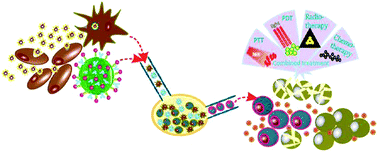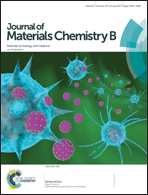Nanomaterial-based cancer immunotherapy
Abstract
Cancer immunotherapy has gained a lot of attention for its unique advantages and promising future. Dendritic cells (DCs), as potential professional antigen-presenting cells (APCs), make a significant contribution to effective cytotoxic T cell (CTL) response for recognizing, processing and presenting antigens to naïve T cells and releasing cytokines at the same time. With the development of nanotechnology, there exists much work applying nanomaterials to cancer immunotherapy based on their advantages, such as huge specific surface area, delivery function, and controllable surface chemistry. This review focuses on summarizing the existing work about nanomaterial-based cancer immunotherapy in detail. Firstly, nanomaterials, such as liposomes, polymers and metals, can deliver antigens and/or adjuvants to induce or promote the CTL cells, helping the immune system to kill tumor cells efficiently. Secondly, some nanomaterials have imaging functions in order to observe the developmental stage of the immune response, such as gold nanoparticles with CT imaging and Fe3O4 with magnetic resonance imaging (MRI). Thirdly, even some nanomaterials themselves can also act as adjuvants to promote the immune response. Fourthly, there are some artificial APCs (aAPCs) made from nanomaterials which were coated with co-stimulatory molecules and MHC proteins loaded with antigen peptides. Besides, nanomaterials can induce the combination therapy to achieve synergistic efficacy, such as immunotherapy combined with photothermal therapy (PTT) or radiotherapy. In the end, combining with the current development trend of nanomaterial-based cancer immunotherapy, we bring forward some design advice and give a positive perspective of this field.

- This article is part of the themed collection: Recent Review Articles


 Please wait while we load your content...
Please wait while we load your content...